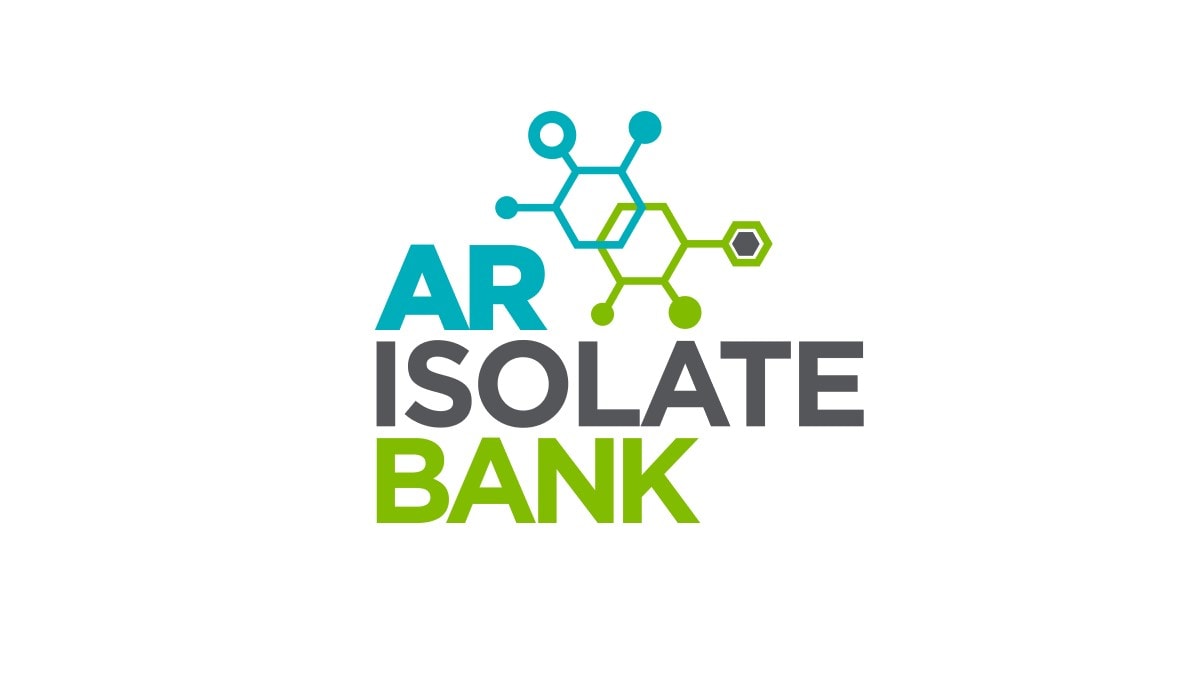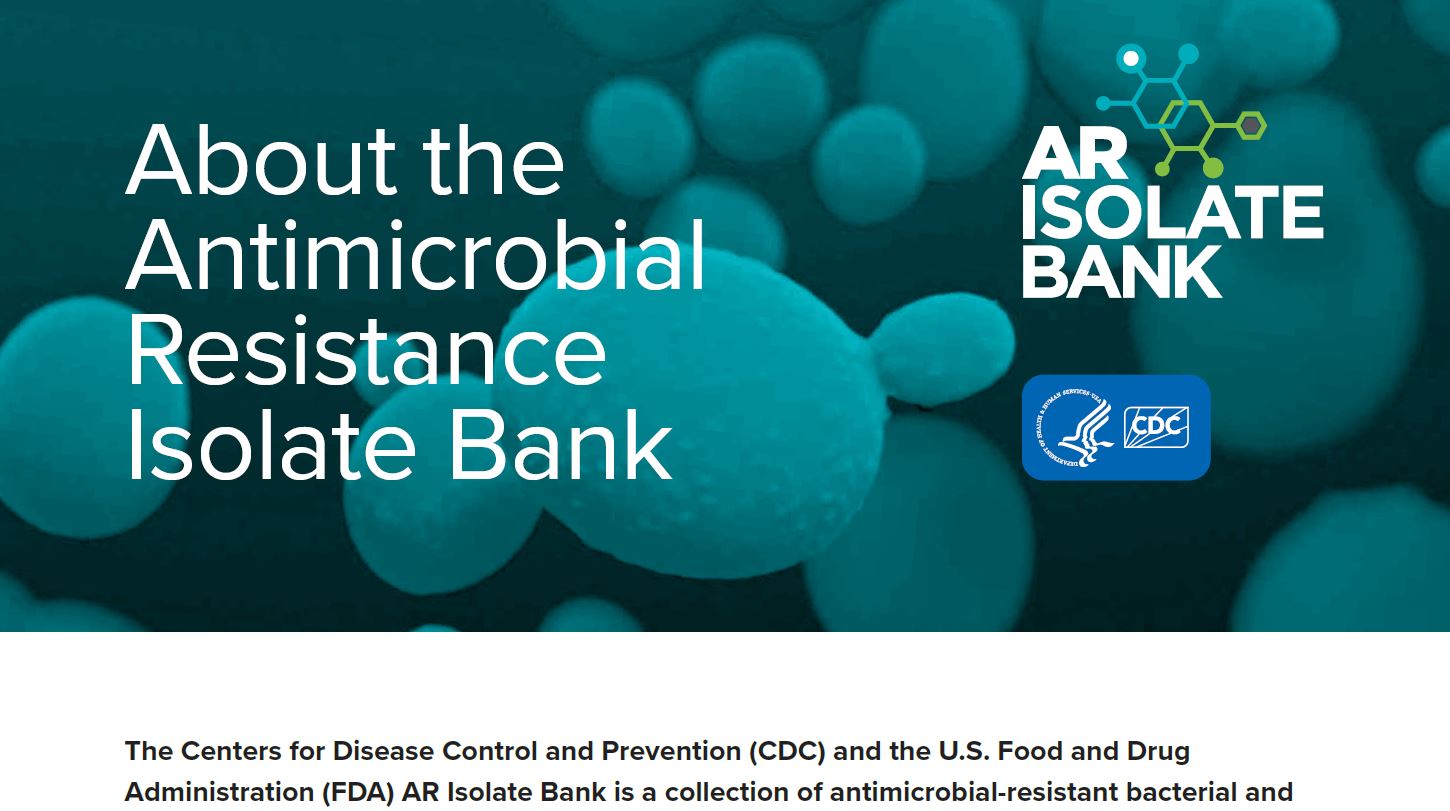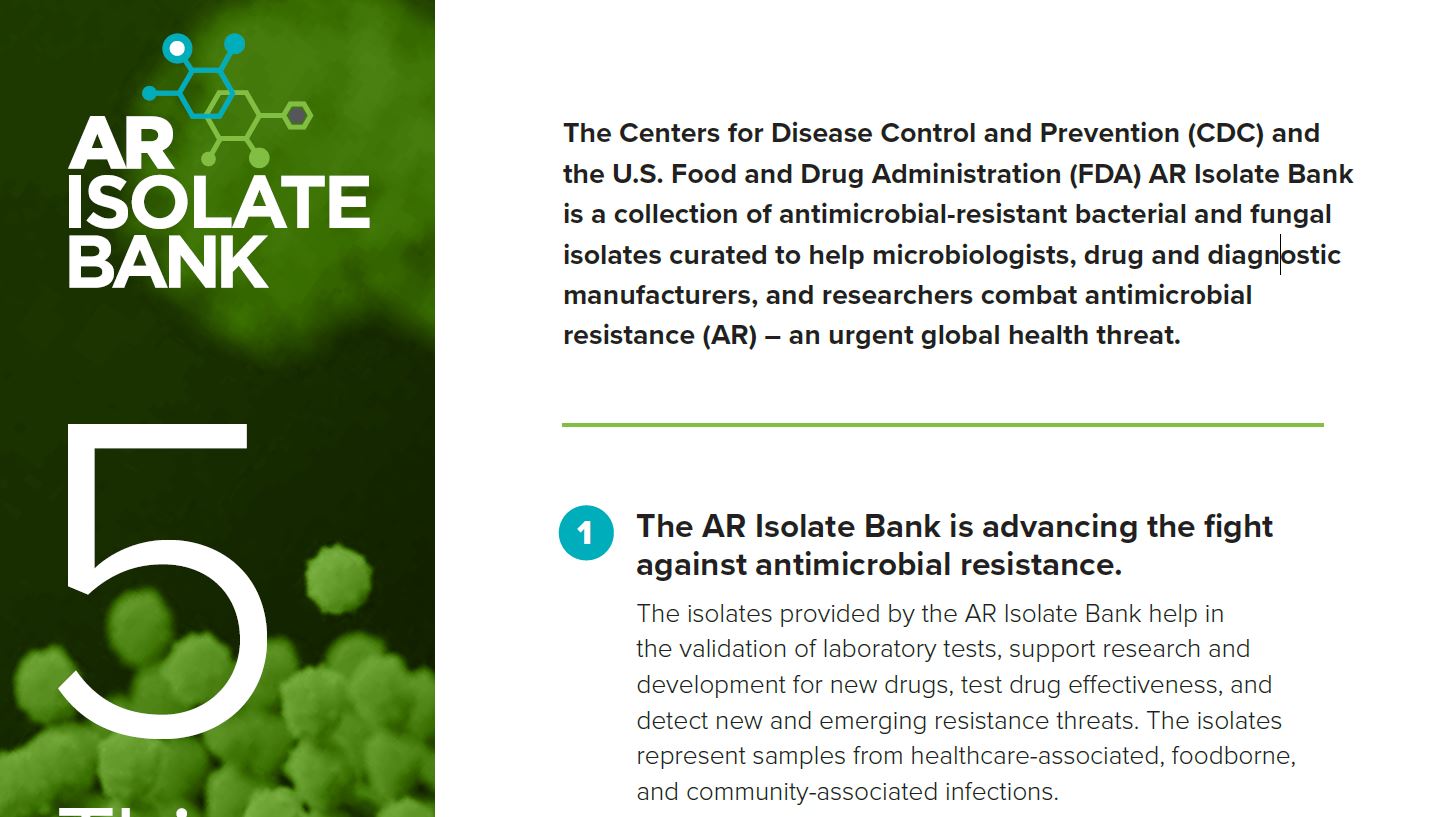Key points
- CDC and the FDA have one of the largest collections of isolates gathered from national reference labs and tracking activities taken from specimens in healthcare, food and community settings.
- The CDC and FDA Antimicrobial Resistance Isolate Bank (AR Isolate Bank) improves patient care and builds solutions against resistance threats.

Advancing the fight against antimicrobial resistance
As of December 1, 2023, the AR Isolate Bank shipped more than 7,900 isolate panels (more than 5,000 isolates). The AR Isolate Bank helps:
- Strengthen diagnostics by validating lab tests.
- Inform research and development to:
- Develop drugs like antibiotics and antifungals.
- Develop diagnostic devices, tests, or assays.
- Satisfy a request or support an application to FDA.
- Develop drugs like antibiotics and antifungals.
- Perform testing to ensure drug effectiveness.
- Study pathogenic mechanisms and genotypic basis of resistance (the ability of germs to adapt and evolve).
- Detect new and unusual public health resistance threats to rapidly implement recommended infection control measures.
Why the AR Isolate Bank is unique
CDC and the FDA have one of the largest collections of isolates gathered from national reference labs and tracking activities, taken from specimens in healthcare, food and community settings. Isolates are provided at no cost to approved institutions, and customers pay for shipping.
Benefits of the using the AR Isolate Bank
- Approved institutions receive isolates at no cost. They only pay for shipping.
- Isolates are delivered in panels, not piecemeal.
- It allows researchers to obtain the specific samples they need quickly and easily.
- It reduces obstacles that may keep companies or researchers from engaging in finding resistance solutions.
- Samples are accompanied by publicly available data (antimicrobial susceptibility profile and resistance mechanisms) to improve efficiencies.
- It offers a convenient web ordering system that increases efficiency.
- Confirmatory testing is performed periodically to ensure samples maintain their resistance mechanisms over time.
- Panels are refreshed as needed to include susceptibility data for newly approved antibiotics, relevant species or mechanisms, and updated whole genome sequence analyses.
Isolate Orders
-Biotechnology company
Resources
How to order isolates from the AR Isolate Bank
Web pages
- CDC provides downloadable minimum inhibitory concentration (MIC) distributions that perform antimicrobial susceptibility testing (AST) of bacterial and Candida bloodstream isolates. These isolates are tested in compliance with standards established by the Clinical and Laboratory Standards Institute (CLSI).
- Working together, CLSI with CDC, Association of Public Health Laboratories, American Society for Microbiology, and College of American Pathologists developed a toolkit to assist clinical laboratories in updating MIC breakpoints. The toolkit is designed to guide performance of a verification study required to update breakpoints. Additional resources can be found within the toolkit that help explain the need for the updates, regulatory requirements and detailed instructions for providing AST breakpoint verification.
- The Active Bacterial Core surveillance (ABCs) Isolate Bank includes an extensive collection of isolates: group A Streptococcus, group B Streptococcus, Streptoccocus pneumoniae, Neisseria meningitidis, and Haemophilus influenzae. ABCs is a program within CDC's Emerging Infections Programs (EIP) network and is an active laboratory- and population-based surveillance system for invasive bacterial pathogens of public health importance.
- The Antibacterial Resistance Leadership Group (ARLG) Virtual Repository provides researchers with clinically well-characterized gram-positive and gram-negative bacteria.
- BEI Resources was established by the National Institute of Allergy and Infectious Diseases (NIAID) to provide tools and information for studying Category A, B, and C priority pathogens, emerging infectious disease agents, non-pathogenic microbes (germs), and other microbiological materials of relevance (e.g., reagents) to the research community.


